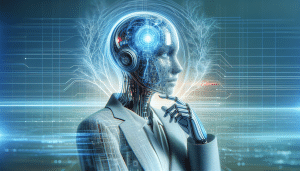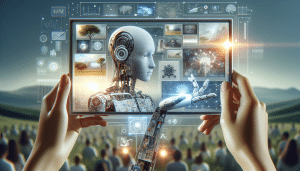The Secrets Behind Artificial Intelligence in Your Everyday Life
Oliver Cooper October 26, 2025
Artificial intelligence drives many modern experiences, often without being noticed. This guide reveals how machine learning, automation, and data science quietly shape daily interactions, device choices, and even entertainment. Uncover the impact of AI technologies in everyday life and how they influence both convenience and decision-making.
Exploring Artificial Intelligence Around You
Artificial intelligence can seem like a distant, complex field. Yet, it’s quietly integrated into daily routines, making processes faster and smarter. From unlocking your phone with facial recognition to asking a digital assistant for the weather, AI is present in many familiar tech moments. These moments may feel simple, but each one draws upon layers of learning algorithms and pattern analysis. Most people engage with artificial intelligence on a daily basis without giving it a second thought. Still, its influence shapes everything from personalized recommendations to smart navigation and communication tools.
Voice assistants rely on natural language processing for interpreting spoken requests. This branch of artificial intelligence, called machine learning, teaches systems to recognize patterns in speech. Additionally, AI filters spam emails, adjusts online search results, and powers translation services across multiple platforms. Every time a streaming site suggests a new show, algorithms have processed vast datasets to match preferences. Behind each recommendation, artificial intelligence analyzes previous sessions to spot trends and predict interests. Even online shopping often relies on these algorithms to show you products tailored to browsing habits.
AI also extends into larger societal systems, including traffic management and energy distribution. Machine learning can optimize bus and train schedules or assist energy grids in reducing waste. Healthcare providers employ predictive analytics to monitor patient health trends and preempt issues. Even banking incorporates AI-driven fraud detection, protecting accounts by identifying unusual activity in real-time. Everyday interactions are becoming more seamless as artificial intelligence and automation become core elements in the fabric of contemporary life.
The Power of Data Science and Machine Learning
Data science sits at the heart of many artificial intelligence applications. In today’s world, huge amounts of personal and operational data help train complex models for prediction and automation. Machine learning, closely related to data science, enables computers to recognize data patterns and improve their performance over time. These advancements feed into applications such as facial recognition and speech-to-text, ensuring results become ever more accurate with use. Data science also makes it possible to create custom user experiences across digital services. The more data collected, the better AI becomes at serving relevant suggestions or responses.
Continuous exposure to data fuels smarter, more intuitive AI-enabled systems. For example, streaming services refine recommendations as they collect more information about listener or viewer habits. Image-recognition technology, used by popular photo apps, improves with every uploaded picture analyzed by machine learning algorithms. In customer service, chatbots are trained with millions of interactions to answer questions more naturally. This blending of data science and machine learning is the foundation of much automation and personalization seen in tech. It ensures products evolve to meet user needs—even before those needs are explicitly mentioned.
Security benefits emerge from this approach, too. Banks leverage predictive analytics powered by machine learning to identify suspicious financial activity in real time. By cross-referencing countless transaction records, algorithms can spot anomalies far faster than any human. In transportation logistics, data science enables traffic pattern analysis, reducing congestion and fuel consumption. Whether applied to entertainment, infrastructure, or safety, the synergy of machine learning and data processing pushes industries towards greater efficiency.
How Automation Shapes Modern Convenience
Automation driven by artificial intelligence makes everyday tasks easier and less time-consuming. In homes, smart thermostats learn preferences to adjust temperatures automatically. Robot vacuums use sensors and algorithms to clean entire rooms based on learned floorplans. Automation extends to email filtering, appointment scheduling, and automatic photo categorization. The rise of smart home technologies means these automated routines continue expanding, working quietly in the background to improve comfort and efficiency without requiring direct oversight.
At work, automation streamlines repetitive tasks, freeing time for more creative or strategic pursuits. In office environments, artificial intelligence manages calendar invites, organizes digital files, and analyzes data for trends. Customer service automation, via AI chatbots, delivers instant answers to common questions—sometimes even handling returns or troubleshooting step-by-step. This shift is not limited to digital spaces. Industries like manufacturing employ AI-powered robots to streamline assembly and quality checks, increasing productivity while maintaining consistency and safety.
For those navigating cities, automated public transportation schedules adapt in response to real-time data, optimizing routes for efficiency. Traffic signals adjust dynamically based on flow, reducing wait times and improving safety. AI-based accessibility tools automate language translation and captioning for digital content, ensuring everyone can participate. The scope of automation, powered by artificial intelligence, continues to broaden. This leads to a seamless layering of convenience across devices, workplaces, and communities.
Personalization and Predictive Technology In Action
Personalization is one of the most recognizable benefits of artificial intelligence. Each time a user scrolls through social media or shops online, predictive systems silently adjust what is displayed. These algorithms take into account previous likes, purchases, and even the time spent viewing an item. Personalized experiences foster stronger engagement, keeping users connected to content that feels relevant. Online platforms, from news feeds to entertainment apps, now use this advanced personalization to anticipate needs and interests.
In ecommerce, AI-driven product suggestions increase the ease of discovering new brands and items. Machine learning technology uses purchase history, search patterns, and demographic data to forecast what shoppers might find interesting. Similarly, streaming platforms deliver custom playlists or video recommendations, balancing novelty with familiarity. News aggregators use content consumption patterns to highlight stories a reader is most likely to click on. Behind these tailored suggestions, machine learning algorithms process vast datasets to make accurate, dynamic predictions, adjusting in response to each interaction.
Personalization also extends to healthcare and fitness technology. Wearable devices harness predictive analytics to encourage healthier habits or provide health alerts. AI-powered apps remind users to hydrate, track sleep, or suggest workouts based on goals and progress. Predictive systems in finance analyze spending behaviors and set up customized savings plans. In education, adaptive learning platforms use AI to tailor lesson difficulty and pacing to student performance. As personalization becomes more intuitive, artificial intelligence builds bridges between individual preferences and seamless digital experiences.
Ethical Considerations and Responsible Use of AI
The rapid spread of artificial intelligence brings important questions about ethics and responsible use. Data privacy remains a major concern, as AI systems often require large amounts of personal information to function effectively. Transparent data collection and use policies help build trust, while governments and organizations set guidelines to protect user rights. Ethical frameworks emphasize fairness, accountability, and explainability to ensure AI operates without bias or unintended harm. Responsible tech companies design models that avoid reinforcing stereotypes or unfair patterns.
Another key topic is ensuring that artificial intelligence remains accessible to all, instead of further widening digital divides. Open-source tools and education initiatives help equip more people with the skills needed to develop and understand AI. Fair access to machine learning resources enables a wider range of voices and solutions. Organizations, including research institutions, regularly audit algorithms to assess impacts on different communities. These efforts support the equitable distribution of benefits across global populations, rather than concentrating advantages in a few hands.
Legal and regulatory frameworks are evolving as AI technologies become more prevalent. Policies focus on balancing innovative progress with public safety and security. Ongoing debate considers how automation affects employment, what transparency looks like in AI decision-making, and how algorithmic bias can be reduced. As artificial intelligence becomes more deeply embedded in society, a collective commitment to ethical use and accountability will shape the future of tech. The challenge is significant, but so is the potential for thoughtful, responsible benefits.
The Future Landscape of Artificial Intelligence
The future of artificial intelligence promises even greater integration into daily life. Smart devices are expected to communicate seamlessly, adapting automatically to routines and changing environments. AI-driven robots may become common in homes, caring for elderly populations or providing companionship. Advances in natural language processing will make digital assistants even more intuitive, able to understand complex commands and subtle emotions. Researchers anticipate more widespread use of AI in sustainability efforts, from climate modeling to efficient resource management.
Healthcare will likely see breakthroughs as artificial intelligence combines data from genetics, lifestyle, and medical records to offer personalized treatment plans. Predictive models may help prevent illness before symptoms develop, based on predictive data analysis. Education platforms powered by AI could deliver fully adaptive learning paths, dynamically updating lessons to fit progress and interest. Alongside these benefits, society will need to address increased data protection and the potential for digital inequality. Ongoing collaboration between developers, policymakers, and the public will be crucial to ensuring the future of AI remains responsible and inclusive.
As AI systems become more autonomous, discussions around ethical limits and human oversight will intensify. Debates will focus on which tasks should be automated and where human judgment remains essential. Collaborative research among governments, universities, and tech companies is already shaping the guidelines for future development. Even as technology advances, success will depend on cooperation, transparency, and a focus on collective well-being. The next chapter of artificial intelligence will be defined by a blend of innovation and responsibility.
References
1. National Institute of Standards and Technology. (n.d.). Artificial Intelligence. Retrieved from https://www.nist.gov/artificial-intelligence
2. Stanford University Human-Centered Artificial Intelligence. (n.d.). AI Index Report. Retrieved from https://hai.stanford.edu/research/ai-index
3. United States Department of Energy. (n.d.). The Role of Artificial Intelligence in Energy. Retrieved from https://www.energy.gov/articles/role-artificial-intelligence-energy
4. Pew Research Center. (n.d.). AI and Human Enhancement. Retrieved from https://www.pewresearch.org/internet/2021/03/17/experts-optimism-on-the-future-of-artificial-intelligence-and-human-enhancement/
5. MIT OpenCourseWare. (n.d.). Artificial Intelligence. Retrieved from https://ocw.mit.edu/courses/electrical-engineering-and-computer-science/6-034-artificial-intelligence-fall-2020/
6. World Economic Forum. (n.d.). Ethics and Artificial Intelligence. Retrieved from https://www.weforum.org/agenda/2022/04/artificial-intelligence-ai-ethics/







